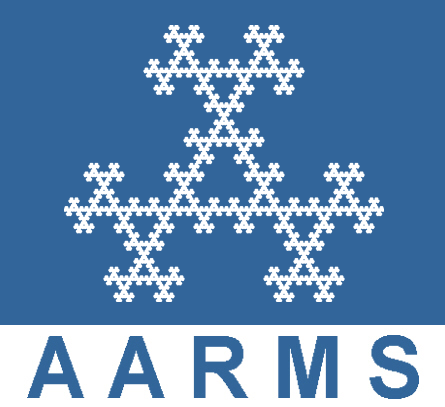2017 CMS Winter Meeting
Waterloo, December 8 - 11, 2017
Symmetric Functions and Generalizations
Org: Angele Hamel (Wilfrid Laurier University) and Stephanie van Willigenburg (University of British Columbia)
[PDF]
Org: Angele Hamel (Wilfrid Laurier University) and Stephanie van Willigenburg (University of British Columbia)
[PDF]
- LAURA COLMENAREJO, York University and Fields Institute
Projections from vector-valued Macdonald polynomials to scalar polynomials and applications to singular polynomials [PDF]
-
We analyze conditions under which a projection from the vector-valued Macdonald polynomials to scalar polynomials has useful properties, especially commuting with the actions of the symmetric group or Hecke algebra, respectively, and with the Cherednik operators for which these polynomials are eigenfunctions.
- SAMANTHA DAHLBERG, University of British Columbia
Chromatic symmetric functions and e-positivity [PDF]
-
Richard Stanley introduced the chromatic symmetric function $X_G$ of a simple graph $G$, which is the sum of all possible proper colorings with colors $\{1,2,3,\dots \}$ coded as monomials in commuting variables. These formal power series are symmetric functions and generalize the chromatic polynomial. Soojin Cho and Stephanie van Willigenburg found that, given a sequence of connected graphs $G_1,G_2,\dots$ where $G_i$ has $i$ vertices, $\{X_{G_i}\}$ forms a basis for the algebra of symmetric functions. This provides a multitude of new bases since they also discovered that only the sequence of complete graphs provides a basis that is equivalent to a classical basis, namely the elementary symmetric functions. This talk will discuss new results on chromatic symmetric functions using these new and old bases, and additionally we will also resolve Stanley's $e$-Positivity of Claw-Contractible-Free Graphs. This is joint work with Angele Foley and Stephanie van Willigenburg.
- IAN GOULDEN, University of Waterloo
The content series, Jucys-Murphy elements and branched covers [PDF]
-
We consider the content series, a symmetric function involving a product over the cells in a partition, of an indeterminate indexed by content. We give a new partial differential equation for the content series, expressed in terms of families of operators that we call $U$ and $D$ operators, whose action on a Schur function $s_{\lambda}$ can be simply expressed in terms of powers of the contents of the cells in $\lambda$. Among our results, we construct the $U$ and $D$ operators explicitly as partial differential operators in the power sums. We also give a combinatorial interpretation for the content series in terms of the Jucys-Murphy elements in the group algebra of the symmetric group. This leads to an interpretation for the content series as a generating series for branched covers of the sphere by a Riemann surface of arbitrary genus $g$. Applications in genus $0$ are given to Hurwitz numbers, monotone Hurwitz numbers, and $m$-hypermap numbers of Bousquet-M\'elou and Schaeffer.
- CARA MONICAL, University of Illinois at Urbana-Champaign
Set-Valued Skyline Fillings [PDF]
-
Set-valued tableaux play an important role in combinatorial $K$-theory.
Separately, semistandard skyline fillings are a combinatorial model for Demazure atoms and key polynomials.
We unify these two concepts by defining a set-valued extension of semistandard skyline fillings and then give analogues of results of J. Haglund, K. Luoto, S. Mason, and S. van Willigenburg.
Then in joint work with O. Pechenik and D. Searles, we show how these fillings can be used to define $K$-theoretic extensions of the quasikey polynomials of S. Assaf and D. Searles.
- ALEJANDRO MORALES, UMass Amherst
Hook formulas for skew shapes: border strips and product formulas [PDF]
-
The celebrated hook-length formula of Frame, Robinson and Thrall from 1954 gives a product formula for the number of standard Young tableaux of straight shape. No such product formula exists for general skew shapes but there are determinantal and positive formulas involving Littlewood-Richardson coefficients. In 2014, Naruse announced a positive formula without these coefficients and very close to the formula for the straight shape case. We give an elementary proof of Naruse's formula based on the case of border strips using the Hamel-Goulden determinantal identities of Schur functions. We also give new product formulas for the number of standard Young tableaux of certain skew shapes using symmetries for evaluations of factorial Schur functions. This is joint work with Igor Pak and Greta Panova.
- REBECCA PATRIAS, UQAM
Promotion on Generalized Oscillating Tableaux and Web Rotation [PDF]
-
We introduce the notion of a generalized oscillating tableau and define a promotion operation on such tableaux that generalizes the classical promotion operation on standard Young tableaux. As our main application, we show that this promotion corresponds to rotation of the irreducible A2-webs of G. Kuperberg.
- ANNA STOKKE, University of Winnipeg
Lattice path constructions for orthosymplectic determinantal formulas [PDF]
-
Characters of representations of orthosymplectic Lie superalgebras can be described as hybrids of symplectic Schur functions and (general linear) Schur functions involving tableaux that have both a symplectic part and a row-strict part. I will discuss lattice path proofs for orthosymplectic Jacobi-Trudi and Giambelli formulas. This is joint work with Terry Visentin.
- ANNA WEIGANDT, University of Illinois at Urbana-Champaign
Prism Tableaux and Alternating Sign Matrices [PDF]
-
A prism tableau is an overlay of semistandard tableaux. In joint work with A. Yong, prism tableaux were used to provide a formula for Schubert polynomials. This expression directly generalizes the tableau rule for Schur polynomials. We study fillings of more general prism shapes. The resulting polynomials are multiplicity free sums of Schubert polynomials. Each prism shape has an associated alternating sign matrix. We use this connection to give a prism formula for the multidegree of an alternating sign matrix variety.
- KAREN YEATS, University of Waterloo
Using renormalization Hopf algebra intuition on symmetric functions [PDF]
-
I will discuss how being inspired by renormalization Hopf algebras (including the Connes-Kreimer Hopf algebra) gives us a different perspective on the symmetric function Hopf algebra. In particular I will discuss the results of arXiv:1511.06337 on some skew Schur function identities.
- MIKE ZABROCKI, York Univeristy
Symmetic group representations and Howe duality [PDF]
-
Let $V_r = {\mathbb C}\{ v_1, v_2, \ldots, v_r\}$ be the module acted on by both $S_r \subseteq Gl_r$. Schur-Weyl duality is the pair of groups $(Gl_n, S_k)$ are mutually commuting when they act on the $k$-fold tensor of $V_n$, $T^k(V_n)$. It is a result of Jones that the partition algebra is the algebra of elements which commute when $S_n$ acts on $T^k(V_n)$. In analogy, Howe duality is that the pair $(Gl_n, Gl_k)$ are mutually commuting groups when they act on the $r$-fold symmetric tensor of $V_n \otimes V_k$, $S^r(V_n \otimes V_k)$. By looking at characters of the symmetric group as symmetric functions we are able to define an algebra of multiset partitions that is the commutant of $S_n$ when acting on $S^r(V_n \otimes V_k)$. This is the algebra that takes the place of the partition algebra in the case of Howe duality instead of Schur-Weyl duality.
This research is joint work with Rosa Orellana.





